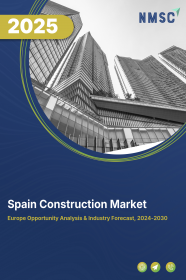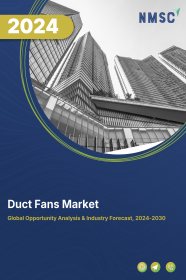
Spain Construction Market by Type (Renovation and New Construction), and by Sector (Real Estate, Infrastructure, and Industrial)–Opportunity Analysis and Industry Forecast, 2024–2030
Industry: Construction & Manufacturing | Publish Date: 10-Feb-2025 | No of Pages: 143 | No. of Tables: 108 | No. of Figures: 53 | Format: PDF | Report Code : CM2201
US Tariff Impact on Spain Construction Market
Trump Tariffs Are Reshaping Global Business
Spain Construction Market Overview
The Spain Construction Market size was valued at USD 119.12 billion in 2023, and is predicted to reach USD 176.45 billion by 2030, at a CAGR of 5.9% from 2024 to 2030.
The construction market, also termed infrastructure market, significantly contributes to the economy, overseeing the entire process from initial planning to ongoing maintenance of various physical structures, encompassing infrastructure, buildings, and facilities. This sector covers a wide range of projects, including residential, commercial, industrial, civil engineering, and institutional infrastructure developments. Collaboration among numerous stakeholders, including architects, engineers, contractors, suppliers, developers, investors, and government agencies, is essential.
Positioned for growth, the industry focuses on environmentally sustainable practices, integrating green building materials and energy-efficient designs. Additionally, rising per capita income in emerging economies and low-interest rates in developed nations are expected to further stimulate the expansion of the infrastructure market.
Large-Scale Construction Initiatives Fuels the Growth of the Market
The construction market in the country is experiencing substantial growth, significantly boosted by large-scale infrastructure initiatives in 2023. Key projects contributing to this expansion include the renovation of the iconic Camp Nou Stadium, the construction of the state-of-the-art MAD2 Data Center Complex, the AQ-BCN1 Cerdanyola del Vallès Data Center, the Soria Social Security Data Center, and the Serbal Solar Power Plant with a capacity of 174 MW.
These projects not only drive the growth of the construction industry but also enhance the nation's construction and renewable energy capabilities.
Increasing Investments in Construction Activities Boosts the Market Growth
The increasing investments towards construction activities in the region are significantly driving the growth of the construction market. According to data from the Global Infrastructure Hub, infrastructure investment in the construction sector reached USD 40 billion in 2023. Notably, the energy sector accounted for the largest share with USD 15 billion, followed by the telecommunications sector with USD 5.2 billion. This investment trend is expected to continue, further boosting the market's growth and development.
Regulatory Complexities Hinders Growth in the Market
The construction market faces significant challenges due to stringent regulatory frameworks. Infrastructure ventures encounter obstacles from the intricate network of government regulations and permitting processes. Infrastructure projects require securing numerous permits and approvals from governmental bodies at local, regional, and national levels.
These permissions include zoning regulations, environmental assessments, compliance with building codes, safety standards, and various regulatory requirements. Lengthy permit acquisition processes, bureaucratic inefficiencies, and regulatory disparities among jurisdictions can significantly prolong project timelines and inflate costs. Additionally, fluctuations in regulations or unexpected policy changes can disrupt ongoing projects and discourage potential investments.
For example, the United States Environmental Protection Agency (EPA) oversees aspects of the infrastructure sector, including air quality, lead management, waste disposal, and water regulations. The EPA's compliance assistance centers provide resources to facilitate environmental compliance during demolition activities, the recycling of infrastructure materials, and the proper disposal of refrigeration and air-conditioning equipment.
Integration of Digitalization and BIM Presents Lucrative Opportunity for Market Expansion
The construction market is undergoing a significant transformation with the integration of digitalization and the adoption of Building Information Modeling (BIM). These advanced technologies enhance efficiency, accuracy, and collaboration across various projects. BIM, an advanced 3D modeling tool, enables stakeholders to generate and oversee digital renditions of structures and infrastructure, facilitating improved coordination and communication among project teams.
For instance, in September 2022, the National Institute of Building Sciences (NIBS) launched the Spain National Building Information Management (BIM) Program, aiming to revolutionize the infrastructure industry and achieve unprecedented levels of industrial efficiency through digitalization. This initiative addresses the insufficient degree of digitalization within the Spain infrastructure sector, hinders the evolution of lifecycle work processes to become more efficient, cost-effective, resilient, and safer for infrastructure and maintenance.
Competitive Landscape
The market players operating in the Spain infrastructure industry include Acciona, S.A., Grupo ACS S.A., FCC Group, Ferrovial S.E., Obrascon Huarte Lain, S.A., Grupo Empresarial San, VINCI Construction, Elecnor Group, TSK ELECTRONICA Y ELECTRICIDAD SA, Tecnicas Reunidas S. A., Taylor Wimpey plc, Construcciones y Reformas J.M. Luquero, Proyectos y Obras ACR, Aldesa Construcciones, S.A., SACYR, S.A., and others.
Spain Construction Market Key Segments
By Type
-
Renovation
-
New Construction
By Sector
-
Real Estate
-
Residential
-
Affordable
-
Luxury
-
-
Commercial
-
Retail Buildings
-
Office Buildings
-
Hospitality
-
Healthcare Facilities
-
Educational Institutes
-
Entertainment Ventures
-
-
-
Infrastructure
-
Transportation
-
Airport
-
Port
-
Rail
-
Road
-
-
Water and Wastewater
-
Energy
-
Telecommunication
-
-
Industrial
-
Manufacturing Plant
-
Warehouses
-
Power Plants
-
Oil Refineries
-
Chemical Plants
-
Key players
-
Acciona, S.A.
-
Grupo ACS S.A.
-
FCC Group
-
Ferrovial S.E.
-
Obrascon Huarte Lain, S.A.
-
Grupo Empresarial San
-
VINCI Construction
-
Elecnor Group
-
TSK ELECTRONICA Y ELECTRICIDAD SA
-
Tecnicas Reunidas S. A.
-
Taylor Wimpey plc
-
Construcciones y Reformas J.M. Luquero
-
Proyectos y Obras ACR
-
Aldesa Construcciones, S.A.
-
SACYR, S.A.
REPORT SCOPE AND SEGMENTATION:
|
Parameters |
Details |
|
Market Size in 2023 |
USD 119.12 Billion |
|
Revenue Forecast in 2030 |
USD 176.45 Billion |
|
Growth Rate |
CAGR of 5.9% from 2024 to 2030 |
|
Analysis Period |
2023–2030 |
|
Base Year Considered |
2023 |
|
Forecast Period |
2024–2030 |
|
Market Size Estimation |
Billion (USD) |
|
Growth Factors |
|
|
Companies Profiled |
15 |
|
Market Share |
Available for 10 companies |
|
Customization Scope |
Free customization (equivalent up to 80 working hours of analysts) after purchase. Addition or alteration to country, regional, and segment scope. |
|
Pricing and Purchase Options |
Avail customized purchase options to meet your exact research needs. |

















 Speak to Our Analyst
Speak to Our Analyst

















